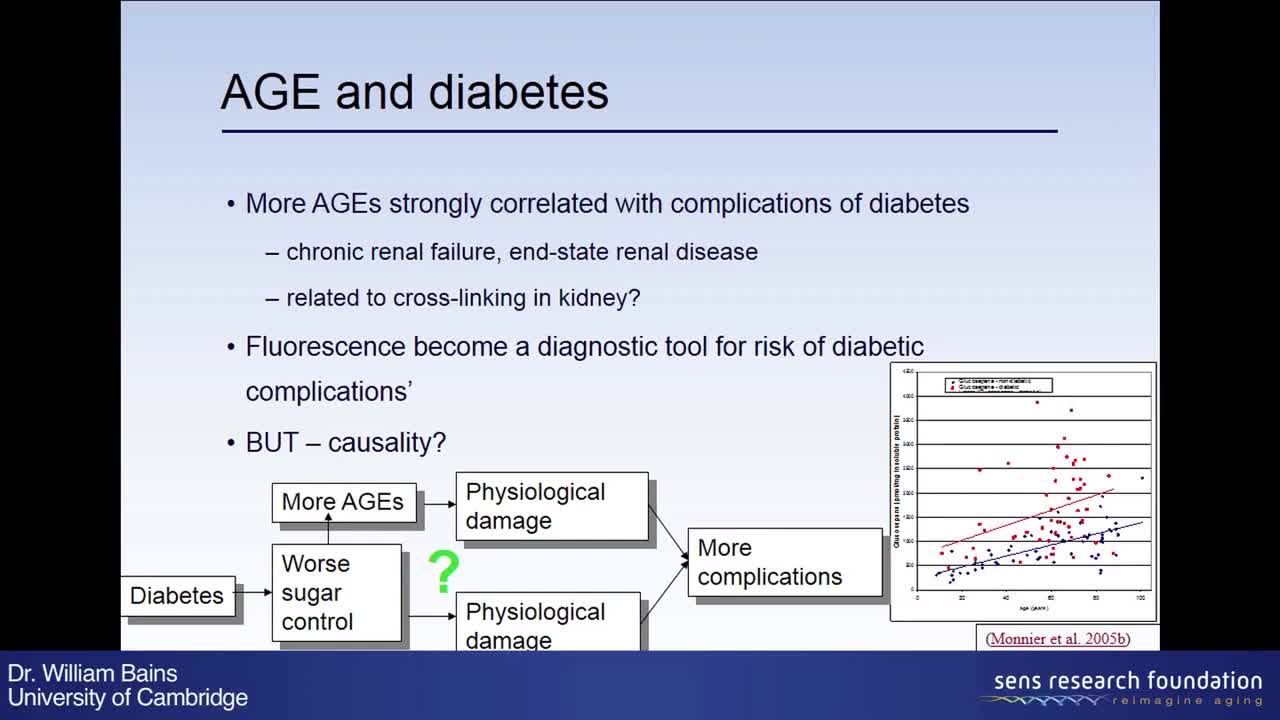Premium Only Content

Cross-linking of the Extracellular Matrix - Dr. William Bains
What Is Cross-Linking?
When you heat onions or toast bread, the sugar molecules in the foods bond to protein molecules. This bonding, which in cooking is called caramelization, is a result of the sugar molecules attaching to protein molecules. When this happens, a series of reactions occur, called glycation, that result in protein molecules bonding with each other.
This cross-linking theory is the idea that chemical changes like this happen in your body and can lead to aging. The process is slow and complicated, but over time, more and more proteins, DNA and other structural molecules in the body develop inappropriate attachments, called cross-links, to one another. These cross-linked molecules don't function properly, and when enough cross-linked molecules accumulate in a specific tissue—such as cartilage, lungs, arteries, and tendons—it can cause problems.
Results of Cross-Linking
When cross-linking occurs, tissues become stiffer, and when tissues stiffen they don't function as efficiently. Many of the symptoms of aging have to do with the stiffening of tissues. Cataracts, for example, are a stiffening of your eyes' lenses. Cross-linking of skin protein collagen has been found to be partially responsible for wrinkles and other age-related skin changes, and researchers believe that cross-linking of protein the walls of the arteries account for atherosclerosis, or the hardening of arteries that increases your risk for heart attack and stroke, among other conditions.
In addition, cross-linking of brain proteins occurs naturally with age, supporting the cross-linking theory of aging.
Slow It Down
While you can't stop cross-linking, you can slow it down. Researchers believe that if the concentration of sugar in the blood is high, then more cross-linking occurs. Foods with a high glycemic index, such as sugary sodas and juices, release sugar into the body quickly. These foods have been associated with cardiovascular disease, possibly because of protein cross-linking.
-
 1:31
1:31
Damon Imani
3 days agoWhoopi TRASHED Kash Patel’s FBI and Got Calmly DESTROYED by Damon!
2.73K7 -
 2:06
2:06
Memology 101
10 hours ago $0.08 earnedWON'T SOMEBODY PLEASE THINK OF THE POOR NARCOTERRORINOS?!
8.44K7 -
 18:43
18:43
Nikko Ortiz
1 day agoWorst Karen Internet Clips...
131K13 -
 8:39
8:39
MetatronHistory
1 day agoWhy Did We Switch From Bronze to Iron in Classical Antiquity?
11.2K1 -
 11:01
11:01
MattMorseTV
16 hours ago $16.81 earnedEU caught in $140,000,000 SCANDAL.
25.9K62 -
 1:44:46
1:44:46
PandaSub2000
13 hours agoUltimate Chicken Horse | ULTRA BEST AT GAMES (HD Edited Replay)
11.5K -
 1:47:16
1:47:16
omarelattar
2 days agoTroy Eckard Shares His Rags to Riches Story
21.3K -
 26:18
26:18
GritsGG
16 hours agoHow to Activate Heat Map & Find Self Revives On Warzone!
16K -
 29:01
29:01
The Pascal Show
1 day ago $10.60 earnedRUNNING SCARED! Candace Owens DESTROYS TPUSA! Are They Backing Out?!
54K59 -
 24:45
24:45
Blabbering Collector
1 day agoUnboxing The 2025 Diagon Alley Advent Calendar By Carat Shop | Harry Potter
18.1K2